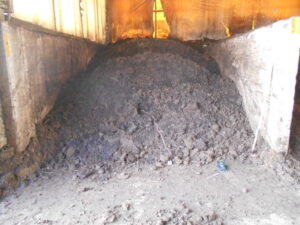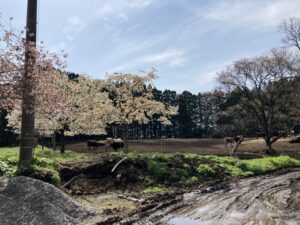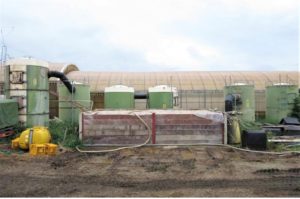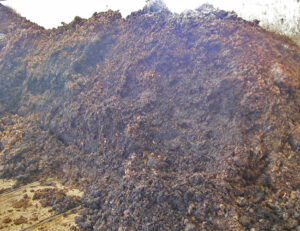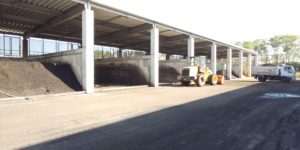Deodorization Improvement at a Food Recycling Facility 4.8 Times Increase in Effectiveness (Client: Food Recycling Facility)
This is a case study of improving the deodorization device at a composting facility for wine lees.
- Products Introduced
- MIRAIE Biological Deodorizing Equipment
- Client and Location
- Yamagata Prefecture / Food Recycling Facility
- Processed Material
- Wine Lees
- Issue
- The wine residue composting facility is deodorizing sawdust, but the odor is not being removed completely. We would like to improve the ability to remove bad odors and reduce complaints to zero.
Before Installation (Rock Wool Deodorization Building)
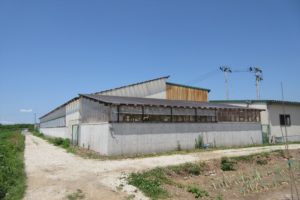
This is a case of improving the deodorizing device in a composting facility for wine residues.
The facility composts wine pomace and other residues using a scoop stirring device, and it had a wood chip deodorizing building as its deodorizing equipment (the building in the foreground of the image).
However, there was a problem of not being able to remove bad odors sufficiently, so the deodorization building was left in place, and porous glass deodorizers were replaced with deodorizers in place of the sawdust.
This is the interior of the facility.
There are two scoop stirring devices, which are stirred periodically.
Blowers are installed on the floor of the fermentation tanks, and when the blowers start blowing and stirring occurs, the odor concentration increases sharply.
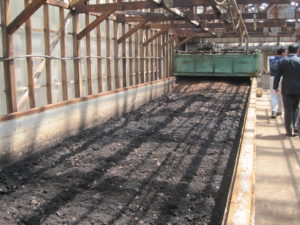
This is the condition during stirring.
When the scoop is operating, the odor meter recorded a value exceeding 450 (equivalent to an odor index of 36).

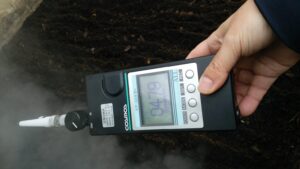
This is the interior of the wood chip deodorizing building.
Wood chips are filled beneath the blue net.
The odor meter value on the surface of the deodorizing tank exceeded 200 (equivalent to an odor index of 27).

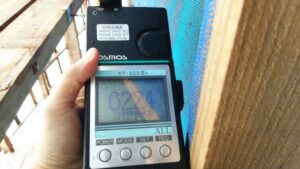
Odor Measurement on the Surface of the Deodorizing Tank
After Installation (Replacement with “MIRAIE Biological Deodorizing”)
With the goal of reducing the odor index to 21 or below (regulatory value for Area B), the replacement was made to MIRAIE Biological Deodorizing (porous glass deodorization).
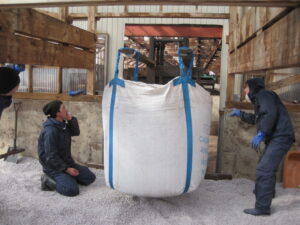
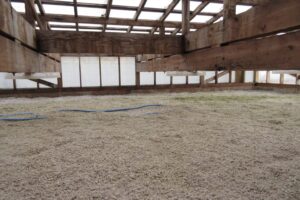
The image on the left shows the replacement process. Porous glass deodorization is being filled into the deodorizing tank from the large bag.
The image on the right shows the condition after filling.
This facility has a deodorizing blower with a maximum capacity of 200 m3/min, yet the volume of the deodorizing tank is small (50 m³), so it is calculated that Ogako cannot remove the stench in the first place (Ogako would require a volume of 200-400 m³).
In contrast, porous glass deodorization is highly effective even with a small amount, making it suitable for situations where the deodorizing tank is small, as in this case.
Odor removal capacity increased 4.8 times
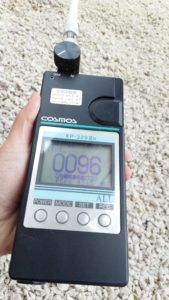
After the replacement, the measured value on the surface of the deodorizing tank decreased to the 90s (equivalent to an odor index of 20).
The amount of exhaust gas that can be processed has also increased threefold compared to before, so the odor removal capability has improved by 4.8 times.
The odor outside the deodorization building has been reduced to a level where no unpleasant smells are detected, resulting in zero odor complaints since the replacement, and even three years later, this absence of complaints continues to be highly praised.
Introduction of the Product
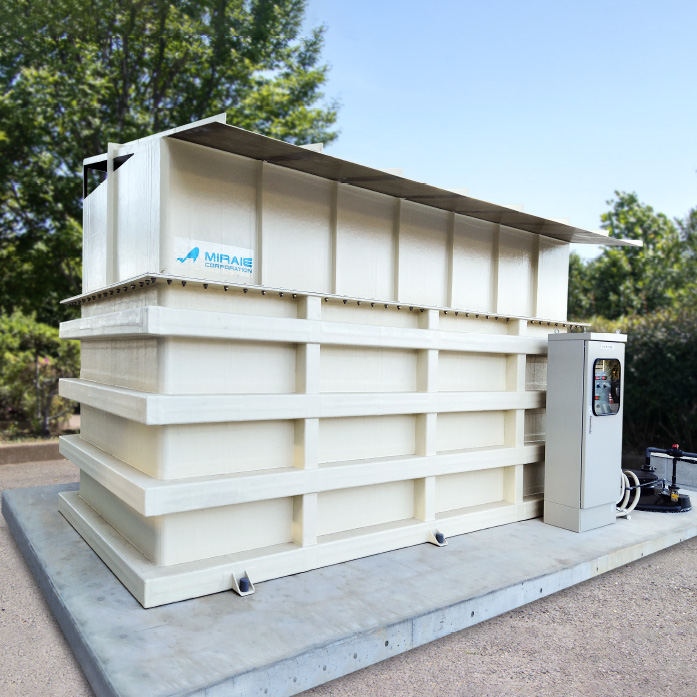
MIRAIE Biological Deodorizing Equipment
Four Times the Removal Capacity of Conventional Biological Deodorizers
Odor problems plague many compost producers. The porous glass device solves the problems of conventional deodorization technologies in terms of performance, cost, and installation area.
writer
CORPORATIONMIRAIE
We are a plant manufacturer specializing in composting and recycling equipment. We provide comprehensive support to customers facing composting and odor issues and strive to strengthen production systems to improve productivity.







 Facebook
Facebook X
X Hatena
Hatena Poket
Poket